



NEW!
MAHLER,TCHAIKOVSKY&MORE
MOZARTSTRINGQUARTETS

RELEASES
and Exploring Music: a few (choice) words about each of our new releases. Look for this box on every page to return easily to the Table of Contents
EXPLORING MUSIC: BETTER THAN ALMOST ANYTHING by David White (4 MIN READ) EXPLORING MUSIC: MAHLER - A PAINTER OF SOUNDS by David M. Greene (4 MIN READ) MOZART: STRING QUARTETS- OUR MAIN SELECTION.............page 4 BEETHOVEN: THE SONATAS FOR VIOLIN AND PIANO.............page 22 ESSAYS MAHLER: LAST OF THE ROMANTIC SYMPHONISTS by JOSEPH BRAUNSTEIN MAHLER: SYMPHONIES 1, 4 & 5.....................................................page 8 EXPLAINER: THE VIOLIN SONATAS OF BEETHOVEN (3 MIN READ) AN ANTHOLOGY OF AMERICAN ORGAN MUSIC........................page 26 EXPLORING MUSIC: ORGANIC by David White (3 MIN READ) MAPLE LEAF RAG: BEST OF SCOTT JOPLIN..................................page 24 EXPLORING MUSIC: RAGGED TIME (3 MIN READ) FFLAMENCO LAMENCOARISTOCRACY An appreciation of a master. by DENNIS KOSTER
NEW
IN THIS ISSUE
NEW RELEASES


IN THIS ISSUE NOW ON SALE In thes
ions, our vault doors are open and you'll find many long out of
in
eco
dings next
o favorites. All titles are downloadable with sound samples and liner notes! PORTRAIT PLAYLIST STREAMING SPOTLIGHT: KEITH JARRETT OUR NEWEST SERIES! Curated music collections Major works - great artists - incredible price! 2 new collections this month! CRD ON CD - $6.99 EACH ARTIST’S ARTISTS 4 classic MHS artists - leaders in the field but not “brand names - 4 great collections, $2.99 each for members The great pianist Keith Jarrett made 2 recordings for The Musical Heritage Society - indulging his musical curiosity by performing contemporary classical works - listen to them now! Yes, CDs! We’ve got a few on sale - 10 titles, in fact, from the great English label CRD. A few of you may remember MHS was once the home for these great recordings - get caught up now!
e sect
pr
t r
r
t
by David White
BETTER THAN ALMOST ANYTHING
The notes to this large collection state the case succinctly – to paraphrase the notes: Mozart is great, all Mozart’s quartets are by Mozart, so therefore are all Mozart’s quartets great?
No. It’s not that difficult an answer, really. Mozart and Bach are about the only composers who live in the rarified air that they did even the simple things with a degree of genius that puts all the others to shame My musical education went as far as taking enough musical theory and music appreciation classes to know that Mozart and Bach set the standards of where simple jobs are done with a simplicity that only a fully secure person would allow It’s been written mostly about Mozart that his works often express ideas so simple that almost no one would dare to put their name on, but Mozart can follow through because he takes the simplicity and builds a Mona Lisa around it
The string quartets are an “in-between” form for Mozart. His friend and teacher Haydn had such facility that you could imagine Joseph tossing a few off after lunch, in time to debut it that evening And Haydn’s quartets are like sturdy machines If they were clocks they would never lose time, and if they were buildings they would age but never look old or outdated, such is their timeless construction.
But Mozart’s touch never seemed to come easily, particularly when you take a long view, as if considering an entire body of work In the realm of concerti, particularly for the piano, Mozart brushes off all competitors – with such grace and genius, it’s the seeming equivalent of
dashing up Mount Everest in a day, on a few protein shakes and no oxygen What’s the big fuss, you’d expect him to say, as the others huff and puff and write 90 minute concerti to say what Mozart accomplished in 17.
Again, in the area of string quartets we have to give the prize to Haydn, for the depth of his work, his development of the art form and his overall accomplishments But what of Mozart –again, his string quartets fall well below his artistic achievements in opera, or for the piano and orchestra. They even seem to show a bit of struggle Heresy possibly, but his quartets actually give off a hint of Schubert at times –stuffed with quality ideas, but uncertainty at times, with creativity a means without an end. Which is another way of saying…many of these quartets are too long!
Perhaps you can make too fine a point – if Mozart ONLY left string quartets as his entire artistic output, this entire writing would be silly and wrong. Mozart’s string quartets do pale in comparison to his piano concerti and his operas but if it were a house, it would be like comparing homes in Paris, London, Rome, or New York And Haydn – I kept this for the end –couldn’t hold a candle to Mozart’s imagination.
As an architect, Haydn was beyond compare. He molded the string quartet into a means of personal expression on par with Bach’s cantatas But Mozart flooded the page with brilliance, and you can’t help but let it wash over you as you listen to these quartets. Is Mozart great? Yes. Is ALL Mozart great? No…but is great Mozart better than great…YES.

EXPLORING MUSIC
The Musical Heritage Review
MAIN SELECTION MAIN SELECTION

MOZART: HIS GREATEST STRING QUARTETS
The American String Quartet

From the liner notes by the violinist from the
American String Quartet: “How does it feel to perform Mozart? we are sometimes asked. Our sensations include awe, but vary with the works Even the awe is a bit checkered: Mozart is great, all Mozart’s quartets are Mozart, but not all Mozart's quartets are great ”
We’ve tried to help eliminate any clutter heretaken from the American String Quartet’s complete performance of the Mozart string quartets, this month’s Main Selection chooses 10 of Mozart’s quartets - his last 10 - to help you to understand this at-times neglected aspect of Mozart’s compositional genius.
TRACK LISTING
String Quartet No. 14 in G Major, K. 387 "Spring"
String Quartet No. 15 in D Minor, K. 421 /417B
String Quartet No. 16 in E-Flat Major, K. 428
String Quartet No. 17 in B-Flat Major, K. 458 "Hunt"
String Quartet No. 18 in A Major, K. 464
String Quartet No. 19 in C Major, K. 465 "Dissonant"
String Quartet No. 20 in D Major, K. 499 "Hoffmeister"
String Quartet No. 21 in D Major, K. 575 "Prussian Quartet No. 1"
String Quartet No. 22 in B-Flat Major, K. 589 "Prussian Quartet No. 2"
String Quartet No. 23 in F Major, K. 590





KAZUHIDE ISOMURA, viola
BACH: Suite for Unaccompanied Cello No. 2, BWV 1008
Chromatic Fantasy & Fugue (performed on viola)

REGER: Suite No. 1, Op. 131d

SAHAN ARZRUNI, piano
Piano Works by Armenian Composers
Toccatas by Schumann & Scarlatti
Haydn: Sonata for Piano with Violin



Heritage Review Musical Heritage Review The Society is really created to continue to ensure that great music and great artists continue to receive deserved attention These collections shine a light on four great musicians who, while not household names, acertainly recorded signature works for MHS They are “artist’s artists” - loved and respected by the best in their fields
Musical
EXCLUSIVE! specialprice
PORTRAIT
ARTIST’S ARTISTS
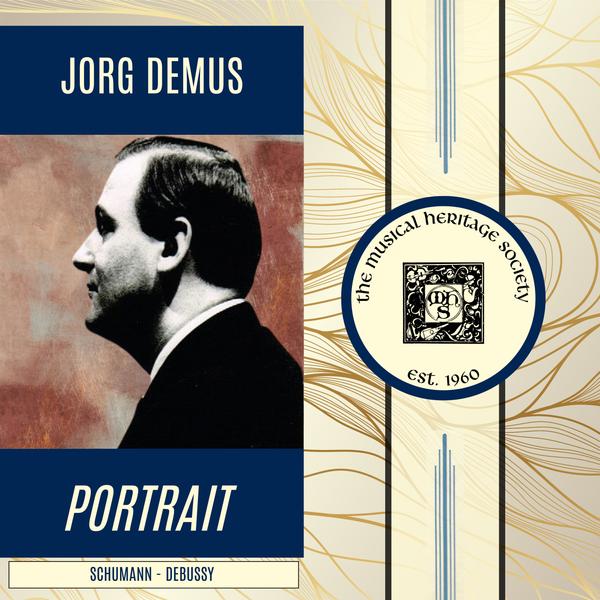

JORG DEMUS, piano
DEBUSSY: Images, Premiere Series
SCHUMANN: Kinderscenen
SCHUBERT: Piano Sonata in G Major, K. 894
SCHUBERT: Fantasy on Themes From Mozart's K. 475, D. 933


MISHA DICHTER, piano BRAHMS
Intermezzi, Op. 116
Variations on A Theme By Handel, Op. 24
MOZART: Sonata for 4 Hands, K. 545 (with Cipa Dichter)



Musical Heritage Review Musical Heritage Review
specialprice
PORTRAIT EXCLUSIVE!

EXPLORING MUSIC by David M. Greene
MAHLER: A PAINTER OF SOUNDS
I am strongly tempted to say that Mahler's present high level of popularity is owing to the phonograph, but this is not strictly true.
To be sure, the proponents of avant-gardism in music love to hold him up as the classic Instance of the great composer who was not understood for fifty years But the facts are that in his lifetime he had a enormous following and that in central Europe his music was pretty well established in the repertoire from about 1920 on. In America, however, he remained almost wholly unknown (except as conductor) until the 1940's. Bruno Walter, his friend and apostle, thought this to be because Sibelius was so firmly entrenched here as the great 20th-century symphonist, but surely it also had to do with the expense of mounting most of his vast works and the resultant timidity of musical entrepreneurs to risk a whole evening on "novelty " Moreover, as far as I can, ascertain, Mahler was represented in domestic record catalogues (except by snippits) only by a performance of the Second Symphony, the product of a daring concert by the Minneapolis Symphony under young Eugene Ormandy. Though I lived and worked and frequented record shops in a major American city in the late '30's, I never laid eyes on this set. My first encounter with Mahler (on records, or anywhere else for that matter) was with the orchestral song-cycle Das Lied von der Erde in its first version under Bruno Walter I was managing a record department, though I had not yet attained my majority, and was determined to bring the city of Washington up to date, so I stocked Columbia M300. When it came in, I took it into the listening booth and, being in my Schubert period at the time, was at first appalled at its modernity. But very soon it began to get to me, and became one of the touchstones of my musical experience (Only a year or so later I heard Hans Kindler conduct the National Symphony in it "live;" the soloists were Suzanne Sten and Hardesty Johnson, in case anyone out there recalls them.) After that Walter recorded the ninth, fourth, and fifth symphonies, in that order, and Mitropoulos recorded the first, and the push that has led to no fewer than four "Integral" recordings (with others in progress) was on.
Mahler has, of course, had his share of detractors, He has been accused of prolixity, hysteria, formlessness, sentimentality, and vulgarity. Few major composers haven't. Little old ladies consider him too loud (One of them behind me at last Saturday's Tosca told anyone who would listen that Mr. Conlon was making the orchestra play "too loud" so that the singers had to "screech.") For such people, music is too loud when they can't be heard over it. But it is also assumed that because Mahler calls for a huge orchestra he aims for volume, whereas, in actuality, he mixes his colors with the greatest delicacy. (He wasn't named Mahler--Painter--for nothing!) And then his name has been linked inextricably (it would seem) with Bruckner's. It is true that Mahler knew and liked the old gentleman and saw to it that his music got played, but in a 1904 letter to his wife, Alma, he called
Bruckner and Brahms "an odd pair of second-raters" which shows you that he had as exquisite taste as Benjamin Britten and Bernard Shaw (Mahler also espoused the cause of young Arnold Schoenberg, though he confessed to Alma that he hadn't the faintest idea what Schoenberg was trying to do )
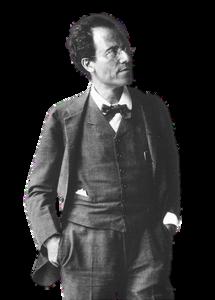


Two other aspects of Mahler's music seem to put people off One is its simplicity. It is full of peasant dances and village bands and ceremonial marches and bugle-calls and horseplay on the one hand ("vulgarity") and of ethereal visions on the other ("sentimentality") Too much has been made of Mahler's conversion from Judaism to Catholicism, it being said that in his "Christian" moments he doth protest too much. Mahler was, in practice, not a notably religious man. If he had any strong faith, it seems to have been in a sort of pantheism, but matters like the meaning of human existence and the hereafter greatly troubled him, and his "religious" music has the crystalline transparency of such mystics as William Blake (An ancient lady, feeling she had little earthly time left, once summoned Mahler to tell her the real truth about heaven!) The other off-putting aspect of his music is its "meaning. " Many people will simply not accept the fact that music is an emotional, not a cognitive, language and assume that it somehow embodies some philosophy or, with a funeral march is very tempting in this regard. Mahler himself did not believe in representational music and detested the attempts by critics to derive "plots" from his works. But that did not stop them. One annotator is sure that the Fifth Symphony is all about an artist who, having failed to live up to his expectations, is about to chuck his career until he is revitalized by "the harmless play of life and nature" and so ascends to Everestian heights of creativity undreamt of by the human mind, Excelsior! Another offers the following schema: 1. Mourning and pain 2. Fighting and wounds 3. Irony, shadowy insecurity, and forced gaiety 4. Interlude(!) 5. Daily work and haste (!!) In Mahler's own time he had an admirer, a Herr Nodnagel, who insisted on working out detailed programmes for the symphonies; that for the Fifth took 23 printed pages, and you could buy it for 30 pfennigs. It turned Mahler magenta with rage.

EXPLORING MUSIC
by David M. Greene
The fifth symphony was written {like most of his music) when Mahler was on his summer vacation--specifically in Carinthia (Karnten) in South Austria--escaping from the backbreaking demands of his job as director of the Imperial Opera (He later conducted the German repertoire at the Met, and was, from 1909 to 1911, conductor of the New York Philharmonic ) This vacation was 1902 and he and his new bride were living beside a mountain lake in, as she puts it, "splendid isolation. " His studio was a spartan little hut on the mountainside above the house. He got up at six, threw on "his oldest rags, " ordered his breakfast sent up, and went immediately to work. Breakfast, when it arrived, was coffee, bread, and preserves. He worked every day until noon, went for a swin, had lunch at one, and then went with Alma on a long walk, sometimes resting to note down musical ideas He worked with the obsessive intensity he brought to all his professional life, and brooked no interruption of any kind. (Men were men in those days!) Alma copied out the score and offered suggestions. (After hearing an initial rehearsal of the first movement back in Vienna she was so distressed by the enormous amount of percussion that Mahler crossed much of it out (Hail to thee, 0 Alma Mahler!) The work was first publicly performed by the Gurzenich Orchestra in Cologne on October 18, 1904 Mahler had strong misgivings about how the audience might take it In the event, there were not many hisses--but there was not much applause either Bruno Walter, who was there, said that he was frankly disappointed in the piece. So was Mahler.
The Fifth was something new for him. In the first place it was his first symphony that did not involve song. (To be sure, No. 1 has no vocal part, but it draws from Mahler's own songs for some of its themes.) In the second Mahler was aware that the old tonalharmonic concept that had underlain the symphony since its inception was breaking down: he was in a no-man's land between the chromaticism of Wagner and the atonality of Schoenberg The approach he took was a new one to counterpoint (culminating in the triple fugue of the final movement). But the orchestration got in the way of the contrapuntal effects. As a result, Mahler tinkered with it until he finally re-orchestrated the whole piece in 1911--the year he succcumbed at fifty-one to pneumonia, heart disease, and exhaustion. The Fifth is regarded by many as the first element of a vast trilogy that includes the other two middle-period instrumental symphonies, the Sixth and Seventh






The Musical Heri R NEW!
NEW RELEASE NEW RELEASE

MAHLER: SYMPHONIES 1, 4 & 5
UTAH SYMPHONY ORCHESTRA
Maurice ABRAVANEL, conductor



AN AN EXCLUSIVE EXCLUSIVE
Mahler’s most popular symphonies are now available in one easily downloaded collection, exclusively available from The Musical Heritage Society.
These famous Vanguard recordings were part of the first complete Mahler cycle featuring an American orchestra. Nearly 3 hours of Mahler’s most popular orchestral works - at a great Members Price!





Mahler's Fifth Symphony signifies a critical point in his stylistic development, and the crystalization of his concept of the symphony as an artistic category.



Mahler's Fifth Symphony signifies a critical point in his stylistic development, and the crystalization of his concept of the symphony as an artistic category. His first symphonic creations grew out of his songs which were in the most cases conceived as lieder with orchestral accompaniment. Thus at the beginning there was the lied which begot the symphonic idea. The first symphony in D major (1884-88) evolved from the cycle Songs of a Wayfarer (1883-1885) of which three poems were penned by Mahler himself. He was strongly attracted to the famous German anthology Des Knaben Wunderhorn (The Youth's Magic Horn) compiled by Achim von Arnim (17811831) and Clemens Brentano (1778-1842), from German poems, folksongs and carols of nearly three centuries.
The integration of songs based on poems from this anthology into the symphonic framework affected the style and spiritual contents of Mahler's second, third and fourth symphonies. The use of this thematic material occured either in the original form (as a song), or in very extended symphonic movements. Thus two lieder went into the second symphony, two into the third and one became the finale of the fourth The integration of this material from the Wunderhorn songs and their spiritual impact on the pertinent symphonies, justify the application of the term "wunderhorn symphonies" to this symphonic trilogy each of which makes use of the human voice The appearance of the purely instrumental Fifth Symphony startled the musical world
Composed 1901-02 and first performed on October 18, 1904, in Cologne, the symphony was heard in Vienna on December 7, 1905, led by the composer in the concerts of the venerable Gesellschaft der Musikfreunde (Society of Friends of Music) It should be remembered that Mahler occupied then the most prestigious post of the director of the Court Opera in Vienna The present writer, then a young teen-ager, distinctly remembers the reviews in



newspapers and a magazine which stressed Mahler's return to the purely instrumental symphony. Nonetheless the Fifth follows the preceding sisterworks in several respects; in the very expanded architectural design--the total number of measures amounting to nearly 2800--in the large instrumental apparatus with a substantial percussion section, in the weight of the finale and last but not least in the typical Austrian character. As for the orchestration Mahler held a reading-rehearsal of the symphony with the Vienna Philharmonic Orchestra, to which his wife, Alma Marie, listened unseen from the gallery. She recounts the following: "I had heard each theme in my head while copying the score, but now I could not hear them at all! Mahler had overscored the percussion instruments and kettle-drums so madly and persistently that little beyond the rhythm was recognizable. I hurried home sobbing aloud. He followed. For a long time I refused to speak. At last I said between my sobs: 'You've written for percussion and nothing else!' He laughed and then produced the score. He crossed out all the kettledrums in red chalk, and half the percussion instruments too. He had felt the same thing himself, but my passionate protest turned the scale. '' Proceeding from practical experiences gained at performances, Mahler did revise the orchestration over and over again until 1910. As for the design of the symphony Mahler devised a three-part division, indicated by Roman numerals and assigned two portions (Nos. 1 and 2) to the first division (I), No. 3 (Scherzo) to the second (II) and Nos. 4 (Adagietto) and 5 (Rondo-Finale) to the third (III). Yet this tripartite organization seems to have been devised for practical considerations in order to gain a longer rest after the first division (about 900 measures). The pause should benefit the over-taxed wind players.
Mahler's symphonic forebearers were Beethoven, Schubert, Berlioz and Bruckner. He himself was a staunch believer in the "eternal law" of the sonata-form which he modified in several respects, however. In the free treatment and expansion of the classical pattern he demonstrated a truly romantic gesture, and at the same time wrote the final chapter of the history of the romantic





and se
enity domina
e the Scherzo, but even here a melancholy tune appears in the Trio. Assuming importance the joyful and the sad are combined with the laendler in contrapuntal juxtaposition in the recapitulation of the Scherzo, which is interrupted by an episode alluding to the Trio. Tidal waves of sound are produced by the entire orchestra playing as loudly as possible in this vigorous Scherzo, which conveys enormous vitality.
The Adagietto appears as a study of contrast. The entire wind section and percussion instruments are silenced, only the strings and the harps being used. The term Adagietto refers only to the dimension and slow tempo of the movement. Obviously Mahler felt that a broadly structured slow movement would not be effective after the length of the preceding movements. Thus the Adagietto functions as a lyrical interlude and also as a thematically generating power, since it furnishes musical ideas for the finale. It is said that the avant-garde musicians of 1905 and later, were somewhat disturbed by the appealing lyricism of the Adagietto for which Mahler drew ideas from the second of the Kindertotenlieder and the song "lch bin der Welt abhanden gekommen. ''
The Rondo-Finale matches the opening movement (Nos. 1 and 2) in its length of nearly 800 measures. It begins with a partial table of contents with references to various musical ideas used in the main body. The movement shows Mahler at the peak of his craftsmanship. In the combination of sonata and rondo, and the application of fugal and variation technique, the finale revives classical traditions. There are four principal ideas to which the melody with the characteristic falling seventh drawn from the Adagietto is joined.
The traditional formal design of exposition, development, recapitualtion and coda is strictly observed. As in the Scherzo there are no recurrences of expression of vehemence, grief or sorrow. Optimism and joy are dominant. The melodies are simple and diatonic and in spite of the contrapuntal texture the picture remains always clear. The climax of the movement is reached with the appearance of the chorale tune heard in the first movement. Bekker called it Lebenshymne (Hymn of Life).

After Mahler's death on May 18, 1911, it had become known that he had left a symphony (No 9), a symphonic song cycle (Das Lied von der Erde) and sketches to a tenth symphony behind Bruno Walter, Mahler's foremost interpreter, lost no time to bring Mahler's artistic legacy before the public The interest in Mahler, the creator, had grown considerably after the triumphant reception of the Eighth Symphony in Munich in 1910. Walter presented Das Lied von der Erde on November 20, 1911, in Munich and conducted the first performance of the Ninth Symphony on June 26, 1912, in Vienna. This writer attended this event.
Several important musicians and writers were given the opportunity by the composer's widow, Alma Maria, to see the sketches for the Tenth Symphony. Among them were Arnold Schonberg, Alban Berg, Anton Webern, Mahler's biographer Richard Spect, and Paul Bekker, the author of the first important book on Mahler's symphonic oeuvre. Discussing briefly the overall design of the projected symphony, Bekker mentioned the interspersion of diary-like entries of highly personal character which he refused to quote fully because of their intimate personal quality. "This score will never

Merrimen
t
r
t





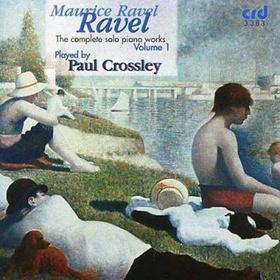




On the whole I find this quite the most satisfying reading of this music I've encountered, and if I were buying only one record, it would be this one for the incredible performance of "Le tombeau de Couperin. "-David M. Greene, Musical Heritage Review


Trevor Pinnock’s earliest recordings as conductor and a keyboard performer Fine collections of Renaissance and Baroque music, in pristine sound! 10 TITLES
CDS FROM THE CRD LABEL
10 TITLES - $6.99 FOR MEMBERS
$6.99 EACH
go
igh
he
age at our site see every title
click on the cover to
r
t to t
p
Musical

PLAYLIST: PASSOVER 5 hours of Jewish music



s Include:
Jewish, Yiddish and Hebrew Folk Songs
by Martha Schlamme, Netania Davrath, the Karmon Israeli Singers and the
Emil Decameron Singers
Passover Seder, performed by Jan Peerce
Klezmer Selections




The
Heritage Review NEW RELEASE NEW RELEASE NEW! PLAYLIST Selection
The Musical Heritage Review PLAYLIST


ALL WORKS ARE COMPLETE WORKS
Symphony No 5
(Pierre Monteux, London Symphony)
Serenade for Strings
(English Chamber Orchestra)
“1812” Overture
(Vienna State Opera Orchestra)
Capriccio Italien
(Vienna State Opera Orchestra)
Concert Fantasy: Romeo & Juliet
(London Symphony)
Swan Lake Suite, Op 20a
(Utah Symphony)
Over four hours of the best works of Tchaikovsky


Violin Concerto
Vadim Brodsky, soloist
(Polish National Radio Orchestra)
Piano Concerto No. 1
John Ogden, soloist
(London Symphony Orchestra)





NEW RELEASE NEW RELEASE NEW!
PLAYLIST: TCHAIKOVSKY
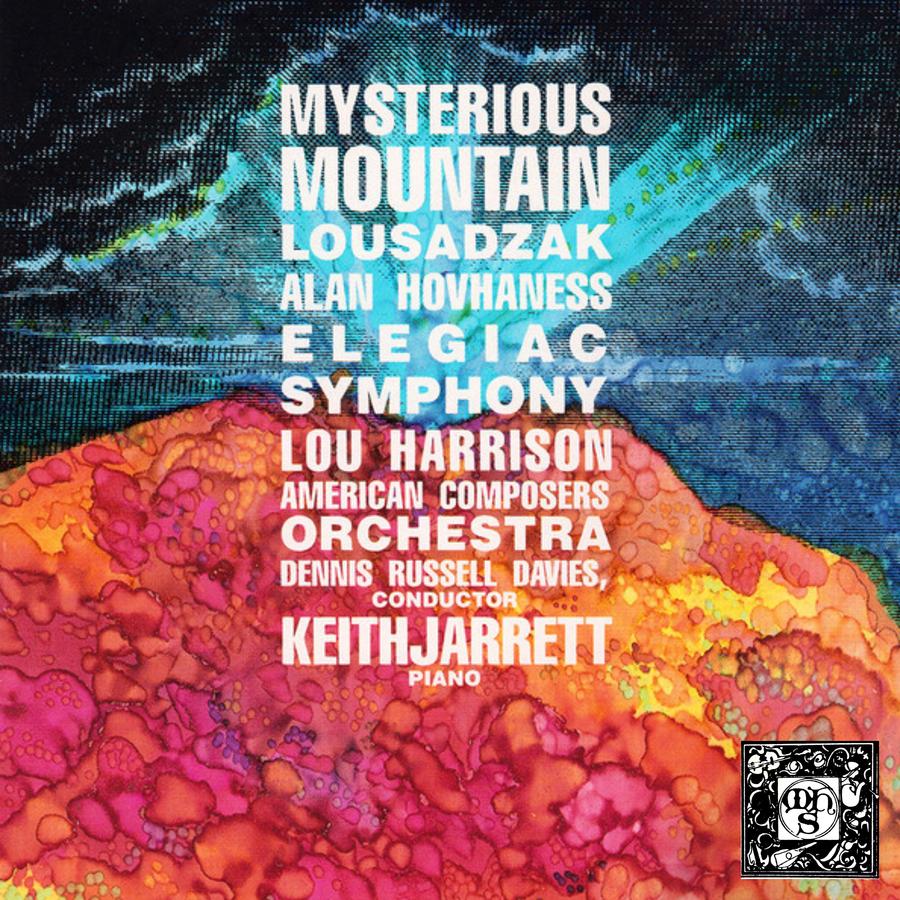
"I understand what Hovhaness is doing
'Lousadzak' certainly isn't a virtuoso’s
piano piece. It's so simple that it's almost impossible to get anything into
it. But when you do, it's like someone
telling you a very simple truth that you
thought of as a cliché all your life. [But]
when you hear someone say it as
though they had really experienced it,
you know right away that it's a cliché
because people just say it wrong. " --
Keith Jarrett

KEITH KEITH JJARRETT ARRETT

In 1989 the music of lifelong composer-friends Alan Hovhaness and Lou Harrison finally came together to share an entire commercially-released disc. The label was New Jersey-based Musical Heritage Society and the conductor the ever-enterprising Dennis Russell Davis, directing The American Composers Orchestra. The two longer works were the second symphonies of each composer - beautiful and heartfelt pieces which juxtaposed high drama with a pronounced serenity. However, it was the presence on this disc of world-class jazz pianist Keith Jarrett, giving a truly scintillating performance of Hovhaness' breakthrough piano concerto 'Lousadzak' --MusicWeb
International
The Musical Heritage Review STREAMING SPOTLIGHT STREAMING SPOTLIGHT NEW!



That a pianist with the varied interests and talents—not to mention the distinguished reputation—of Keith Jarrett turned his attention to
Lousadzak has served to attract
the notice of listeners unlikely
otherwise to have encountered
such a work. And Jarrett’s
performance has much to
recommend it. --Fanfare CLICK




KEITH KEITH JJARRETT ARRETT




The Musical Heritage Review STREAMING SPOTLIGHT STREAMING SPOTLIGHT NEW!

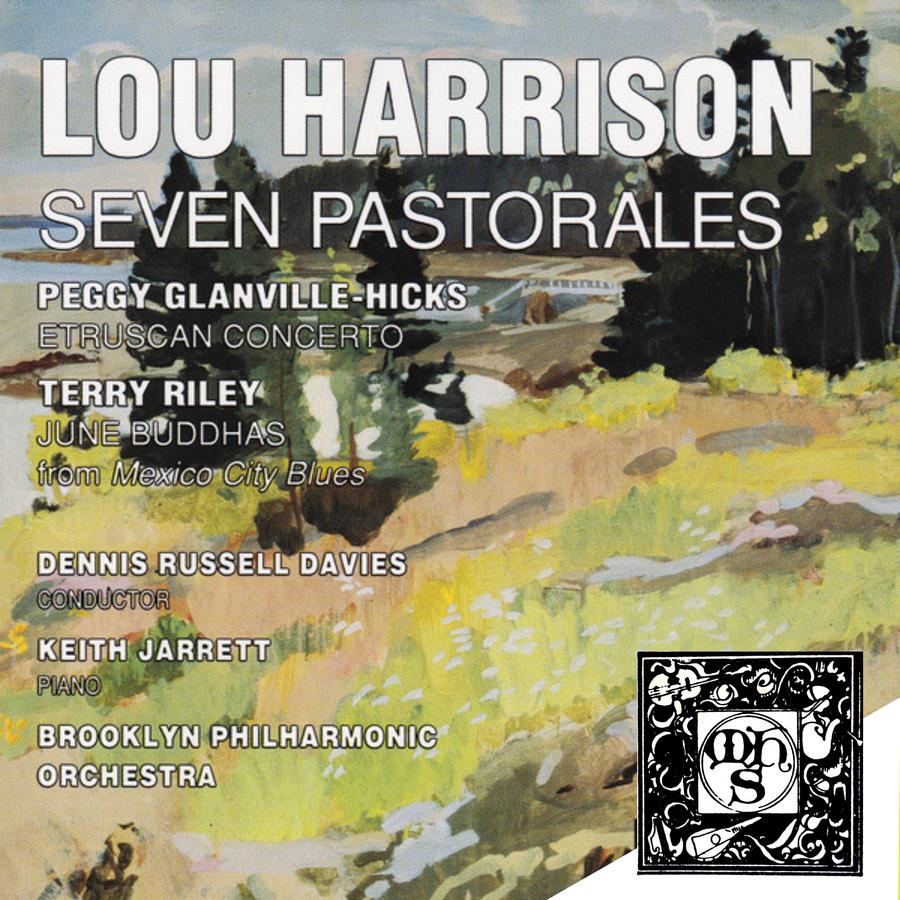


BELOW TO LISTEN AT THESE GREAT SERVICES
BELOW TO LISTEN AT THESE GREAT SERVICES
AVAILABLE
JARRETT PLAYS “ETRUSCAN CONCERTO” BY PEGGY GLANVILLE-HICKS
CLICK
ALSO
KEITH
EXPLAINER: THE BEETHOVEN VIOLIN & PIANO SONATAS
In theearly days of theMusicalHeritageReview, theeditors publishedhelpfulguides to thebuying thecornerstone works ofclassicalmusic. We’llbe reprintingmany of thesein thefuture.
The violin sonata shares a common heritage with the piano trio Both grew out of the solo keyboard sonata More specifically, they grew out of publishers' desires to reach a wider market with keyboard sonatas. By adding violin accompaniments to the piano works, many additional copies might be sold; the same holds true for cello parts, which could be nothing more than the left hand of the basic piano score.
By the time Beethoven comes on the scene, independence of parts had already been established Therefore, we may consider his violin sonatas as true duo-sonatas, not piano pieces with violin ad libitum. Never mind that his title pages read Sonatas for Piano with the Accompaniment of a Violin. These works cannot be played without the fiddle, the way many an 18th-century "violin sonata" could Nomenclature is not always accurate and traditions persist. After all, how many Haydn quartets were called divertimento, even after that form had ceased to have the function associated with entertainment music? With Beethoven's last duo we find the title "Sonata for Pianoforte and Violin " That was written in 1812 and published four years later.
Of the ten works in this form, eight belong to Beethoven's Early period and two come from his
Middle epoch They parallel his development as a composer in the more elaborate forms of string quartet, piano sonata and symphony but do not show the tremendous strides he was making in those areas. The duo-sonata was simply not the medium for his most important statements On the other hand, some of his most felicitous and charming moments may be found here What could be more delightful than the "Spring" Sonata, Op. 24, which smiles from beginning to end, and even laughs out loud in the Scherzo? And if you seek classic grace and Beethoven at his most serene, then the last sonata, Op 96 is the perfect example

EXPLORING MUSIC by The MHS Staff
BEETHOVEN: THE TEN SONATAS FOR VIOLIN & PIANO
Claude FRANK, piano
Pamela FRANK, piano
These works rank among Beethoven’s most profound and his most popular.
“
The Ten” , as this collection is often referred to by musicians, spans Beethoven’s entire career, and offers the musical sophistication and emotional diversity that is only found in Beethoven’s greatest chamber music.
This recording pairs the young and old, father and daughter and American musical royalty.
$4.99 $4.99




EXPLORING MUSIC
by David White
RAGGED TIME
l In my initial listening to this wonderful collection, I had a wonderful memory that I thought would signal a negative slant to this review Since I listen for the purposes of review AND to do quality control for The Society, I spent a few hours taking in this ragtime musical bath.
And the wonderful memory that I wrote of was – and as I prepare to write it, I realize perhaps it will only be wonderful to me – of a day at a county fair on Labor Day weekend, nearly a decade ago. My young son had spent most of the day having a raucous, happy day with his best friend We were miles from home, and as I discovered, managing time and stamina efficiency is a skill most five year olds have yet to master Directly put, he crapped out and there was still quite a bit to do, and no one wanted to go home with the same desire that he did So I sat on a bench and let the five year old take a nap
The place of his choosing was quiet at the start, but as he (and possibly I) drifted off, we realized that our resting spot was quiet and empty for a reason –we had set up right next to an exhibit on wheels that was actually a very large player piano, with additional one-man-band elements like cymbals and bass drums for extra effect. I recognized most of the songs, and most of that thirty minutes was made up of the music of Scott Joplin
What’s the point? In my first run-through on this title, I had that same feeling after the first fifteen minutes The running order – in keeping with standard practice – is to put the most familiar songs at the top, and to be honest, I was at first listening for any glaring errors (no use thinking about the music if the album’s wrong) And it drove me insane – so if you think that listening to some music that reminds you of being at an endless outdoor fair that ladles on the nostalgia, then perhaps don’t go much further – there’s still hundreds of other downloads to think about and listen to.

But don’t do yourself a disservice – there’s two deep running artists currents at work in this collection.
The first – that of the composer, Scott Joplin –shows off a decidedly limited but remarkably fertile imagination. Not really a weak compliment – but Joplin knew who he was, and stayed in his “artistic lane” , when it came to works for solo piano Yes, he wrote operas and orchestral works, but when it comes to Scott Joplin’s artistic destiny, he does belong in a conversation where he intersects with
Debussy, Ravel and Chopin His best pieces suddenly surprise you, and his delicious right hand skill and the enjoyment you can get from it places him with those composers just named
The second “eardrum” used in listening is a nod to the talents of William Albright. For those unfamiliar – and his death was nearly 30 years ago, so it’s entirely possible to have lost the thread - Mr. Albright had a stunning career as a musician and a teacher. He received two Fulbright Scholarships (very rarely achieved), two Guggenheim Fellowships and numerous other prizes and award – and he was equally comfortable in the world of contemporary organ composition as he was in the performance of stride piano and ragtime
To refine your understanding of stride and ragtime, Mr Albright is the antidote He doesn’t fall into the trap of “The Sting” , and he doesn’t speed up to increase the virtuosic nature of the music He relaxes – take for example “The Easy Winners” a very familiar song that benefits greatly his relaxed approach. “Easy” is in the title and the easy element brings out the New Orleans nature of the song. Same with Joplin’s masterpiece “Solace” , a piece that gets him closest to the pantheon of Debussy than any other (does that matter?)

The Musical Heritage Review
NEW RELEASE NEW RELEASE

SCOTT JOPLIN:
MAPLE LEAF RAG: A Selection of His Finest Works
William Albright, piano
William Bolcom, piano



XCLUSIVE CLUSIVE
This collection includes:
Maple Leaf Rag
The Favorite
The Easy Winners
The Entertainer
Elite Syncopations
Nonpareil
Gladiolus Rag
Pine Apple Rag
Euphonic Sounds
Solace
Silver Swan Rag
The Great Collision March
Swipsey Cake March
Sunflower Slow Drag
Binks' Waltz
Heliotrope Bouquet
Pleasant Moments
William Albright, piano
Something Doing (Scott Joplin, Scott Hayden)
Felicity Rag (Scott Joplin, Scott Hayden)


William Bolcom, piano
NEW!
EXPLORING MUSIC
 by David White
by David White
ORGANIC...BORN IN THE USA
It’s fair to raise the question – what are you getting when you purchase this collection? Is an anthology a collection or just another fancy word that we need to use when we get tired or bored of calling something a collection? The internet told me that an anthology is a collection of a number of authors or artists collected together with one theme – so in this case, anthology is right!
In the world of classical music “marketing” , or at least classical music “putting things together” , collections tend toward a highly scholarly bent, which makes sense since these collections aren’t being put together to sell hot dogs and they aren’t being put together by hot dog vendors. So Janice and Charles Beck, in the early 1970s, went to the Musical Heritage Society with the idea that they were going to go where no organist had gone before – they were going to memorialize the early organ works of the early American citizens
Organ music is a career for the brave or stupid –the amount of people making their living performing or writing about or teaching organ music could be put in a room in a nice hotel in a medium sized city and locked in and they’d never be heard from again. And it would take a few days for someone to realize what had happened (let’s face it, by Sunday they’d be missed)
These recordings have been out of print for over 40 years, but they represent a truly crazy and wonderful journey. Researching and performing the organ works of the first American composers – some wrote even before
we started to call ourselves Americans. While important to us, it’s key to remember that Bach had died before the United States became a country, so organ music wasn’t as young or undeveloped as the USA. But these folks were in a wilderness – and just the act of performing ANY organ music would seem to be a task, before you start to uncover those hardy souls who attempted to write NEW organ music
I’ll spoil any surprises if you were curious – no, there’s no hidden works here that rival the great organ works that were being written in Europe, and nothing that would make you think someone might have earned a trip to peek over the masters’ shoulder But – what you hear the glimpses of a new vocabulary. The works here are all short works – no organ symphonies, one sonata, but mostly hymns for the initial audiences – churchgoers of a particularly Puritanical bent But they were driven by a desire that matched the guys in Philly and Washington and Boston and Saratoga and Fort Ticonderoga who were distracted from making music because they were fighting against the British in a very unfriendly manner. Then after that unpleasantness left, we see a flowering in Volume 2 as composers attempt to set down roots that will tell the world that this new country has its own identity, and it would need to be expressed in musical ideas.
So I’m not certain if this anthology is meant for continuous and background play – almost certainly not, after the initial go through. But as a item to be lingered over, to be thought about and examined, there might not be a more refreshing and helpful series of recordings offered

.
The Musical Heritage Review

An Anthology of American Organ Music
Volumes 1 & 2
Janice BECK, organ



“It is inconceivable that this great country of ours shall always be an artistic
parasite...If we are to have an American school of music, and we must have one, we must make it ourselves. . . ”
--Arthur Foote
A VAULT TREASURE
These long out of print recordings from the Orpheus label show the progression of America’s first composers, growing with the country, and embracing or rejecting the European standards of their teachers. Volumes 1 & 2 are available in this exclusive collection.





NEW RELEASE NEW RELEASE NEW!
FFLAMENCO LAMENCOARISTOCRACY

celebrating this historic MHS release
by Dennis Koster
MHS recording artist and pupil of
Mario Escudero

Behind Carnegie Hall, the next door to legendary NY sheet music store Pattleston’s, Juan Orozco’s was the most beautiful guitar store in city, its wall lined with superb Spanish tiles, guitars ensconced in rich wooden cabinates, and far and away the best guitar hang-out in town.
Classical and flamenco guitarists from all over the world visited to make contacts, exchange ideas, out-do each other, play all the superb guitars on display Always a melodious hub-bub
One Saturday afternoon virtuoso guitarist Mario Escudero walked in the front door accompanied by members of the Jose Greco Dance Company, performing in New York A hush came over the room, followed by an awkward silence
The situation tickled Escudero His face lit into a dazzling smile, he winked and said, “The Aristocracy has arrived!”
When l was fifteen, l asked my guitar teacher - and idol - how old he was when he first took the stage Escudero’s face abstracted as he assembled distant memories“l was five or six and l was bad! My mother and father were a song and dance team traveling throughout France in a musical revue
“Every time the company’s director came into the dressing
room, l started crying, and said l wanted to be in the show too ‘Pay no attention to him, ’ my mother said and slapped me into the corner of the room ‘But what will do in the show?’ asked the very charming director, and l said, ‘Play the guitar!’
“‘Well, let me hear what you can do with that guitar, Little Boy ’” That night, El Niño Mario Escudero took the stage for the first time The director of that revue was Maurice Chevalier Thus is born Musical Aristocracy
Immediately in demand, Escudero accompanied the greatest flamenco dancers and singers - Carmen Amaya, Jose Greco et al - in their World tours, until the problem arose that Escudero’s solos often garnered more applause than did the Star dancer’s I’d grown up with the story that Mario had once broken a guitar on the feet of a famous dancer who came on stage to dance while the audience was demanding an encore from Escudero.

I never really believed that though - there are lots of tall tales in world of flamenco - till once in the late 60s, while accompanying a rehearsal for a Spanish Dance Company in Carnegie Hall, an old Spanish pianist (who played the “classical numbers”) said to me, “Hey kid, who taught you to play like that?” ………. “Escudero! He’s crazy!I saw him break a guitar on and walk off the stage!”
Escudero enjoyed success as a concert and recording artist for more than two decades, but poor management and terrible gypsy-styled business decisions prevented him from achieving the recognition he truly deserved. Eclipsed in his fame by boisterous showmen, Carlos Montoya and Manitas de Plata, the sophisticated, technically brilliant playing of Mario Escudero receded from public view
As adults, Mario and l maintained a quiet friendship, and l returned to study flamenco in the evolved style he had developed over the years. I especially wanted to learn his composition Ímpetu, an altogether new take on the traditional flamenco rhythm bulerías This particular piece had a lifechanging effect on the teenaged Paco de Lucía, who learned it from Escudero and went to create a new and revolutionary style of flamenco soon after
One afternoon, completing the piece in our casual lesson, Mario said to me, “Let’s listen ” He held a double LP set, with a plain white cover - l couldn’t help but think of the Beatles “White Album” - and saying nothing more, he played his last recording for me
Nothing like this had ever happened between us - Mario never liked to call attention to himself As we listened, Mario maintained a wistful smile, now and then pointing and saying, “I’m rushing here ” I didn’t hear it What l did hear was the culmination of a truly great guitarist’s artistry
I heard all the music he’d taught as a teen, but also heard miraculous, kaleidoscopic transformations as ideas developed with apparently limitless invention, adding layer upon layer of harmonic sophistication which is just not expected in flamenco guitar The technical brilliance of the playing is truly breathtaking, but the listener is often too distracted by musical sophistication to even noti th i ibilit f E d ’ virtuosity. LISTEN
And then there’s the rhythm - the compás which is the heart and soul of flamenco Today flamenco has become a very loud art Complex flamenco rhythms are hammered into our ears by percussion instrumentation which often includes rock drum kits, always amplified to 11
In all of the guitar solos on his MHS recording, one hears Escudero’s melodic and harmonic brilliance unfold in a torrent of rhythmic propulsion. The complexity of flamenco’s rhythmic structures impressed upon us not with noise, but with the dynamism of great guitar playing, a lifetime spent amongthe greatest artists of flamenco history
I am personally thrilled that the Musical Heritage Society now presenting this historic recording -this wonderful memory for me - to the World again. Being heard by the music loving MHS audience should go a long way to restoring Mario Escuderotrue Flamenco Aristocracy to his rightful place in musical






TO T T SERVICES





The Musical Heritage
Here's a few quick pointers to get the most out of the new Musical Heritage Review. CLICK ON THE ALBUM COVER If you have any questions about our releases - Just click on the cover and you’ll be taken right to the product page on our web site. There you’ll get reviews, track listings, sound samples and more! OUR INTERACTIVE LINER NOTES - NOW DOWNLOADABLE! If you see this icon, we've restored the liner notes from this recording, and you can now read them in our interactive format The liner notes will read like a magazine, you can flip the pages and the booklet looks great on a phone, tablet or desktop computer.
u can try before you buy. On our product pages, you will find at least one sound sample for you to try before you buy! We should soon have samples for every title on the site! You can listen to hundreds of samples of our releases any time at our YouTube channel. Click here to listen and subscribe!
The Musical Heritage Review The Musical Heritage Review FAQs
Review has changed with the times.
LISTEN BEFORE YOU BUY: SOUND SAMPLES Yo



BEETHOVEN: BEETHOVEN: THEGREAT THEGREAT PIANO PIANO
SONATAS SONATAS

PERFORMEDBY PERFORMEDBY PAUL PAUL
BADURA-SKODA BADURA-SKODA
COMING COMING in THE NEXT in THE NEXT Musical Heritage Society, Jazz Heritage Society & The Musical Heritage Review © 1962-2023 Heritage Music Royalties usical Heritage Society, Jazz Heritage Society & The usical Heritage Review © 1962-2023 Heritage Music Royalties. All Musical Heritage Review written contents © 1975-2023 Heritage Music Royalties All Musical Heritage Review written contents © 1975-2023 Heritage Music Royalties. All Musical Heritage Society sound recordings © 1968-2023 Heritage Music Royalties. All Musical Heritage Society sound recordings © 1968-2023 Heritage Music Royalties. The Musical Heritage Review The Musical Heritage Review
































































 by David White
by David White













